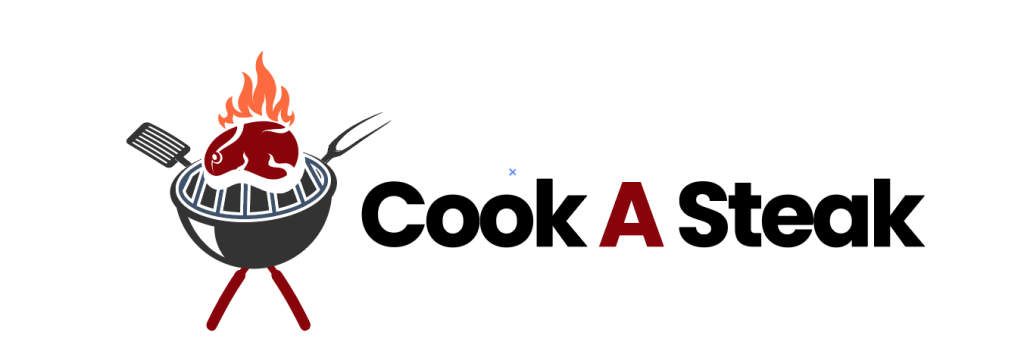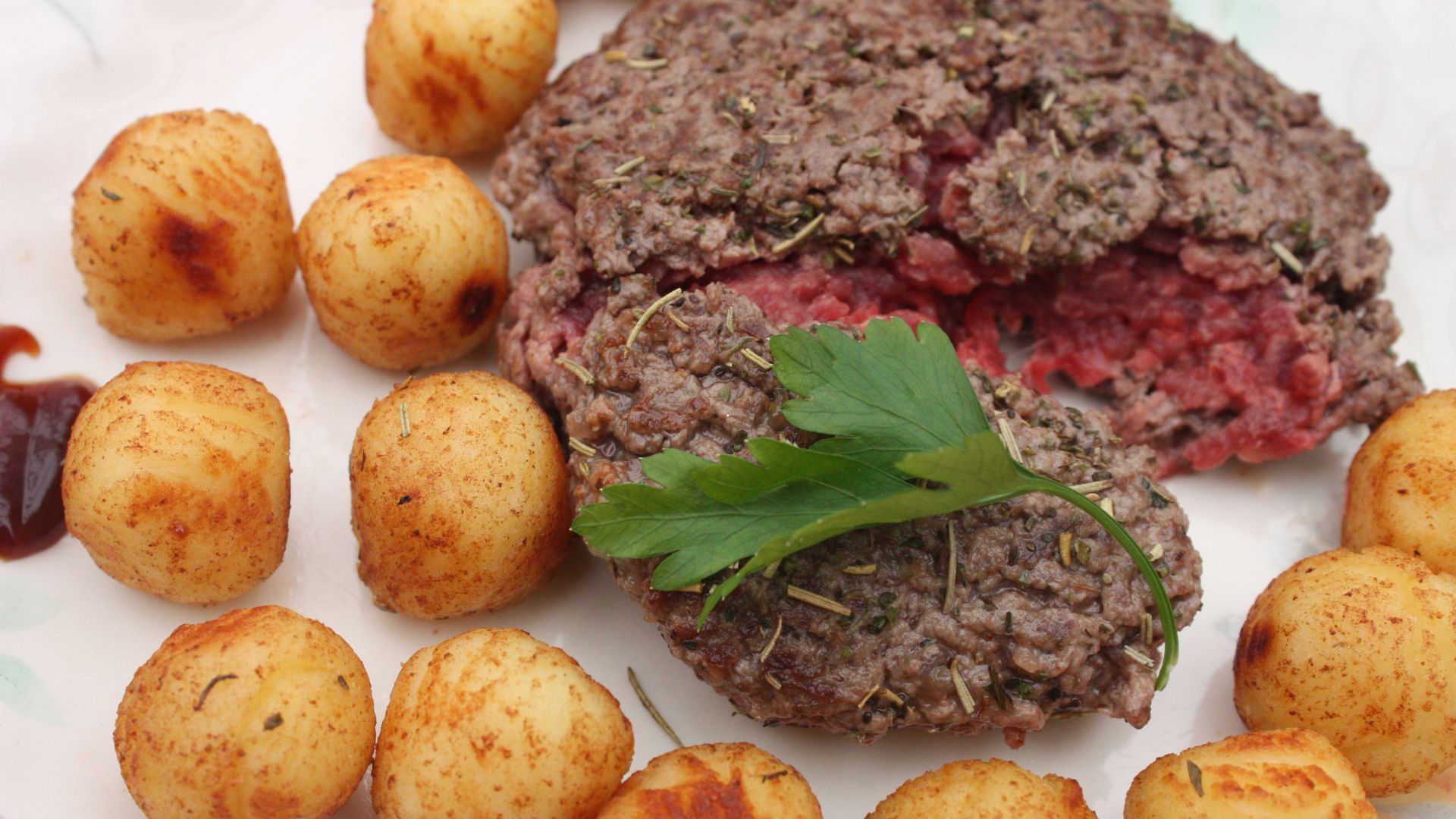Steak haché (stak ah-shey) is a dish that is typically French and comes with its fair share of history. With such acclaim as a steak chef who owns one of the noted steakhouses in the city, I would love to reveal everything I know on how to make the perfect steak haché.
The origin of haché steak is from French cuisine. Today it’s loved everywhere in the world due to its balanced taste and high adaptability. Though it might sound straightforward, one has to appreciate the complexities involved in the methods of developing the steak haché such that it goes 5 steps above a normal burger into that gourmet burger category but still remains very accessible.
Thus, in this article, I seek to outline comprehensive detail on all the fun and critical aspects of the perfect steak haché– its history, its styles, its best ingredients, its ideal cooking methods, its best serving ideas, and its most common pitfalls. You will mesmerize your family and friends with incredible steak haché prepared in your kitchen and made just like in the restaurants thanks to me being a steak specialist.
A Brief History of Steak Haché
While the exact origins are debated, most culinary historians agree steak haché likely emerged in France sometime in the 18th or 19th centuries. The dish gets its name from the French verb “hacher” meaning to chop or mince, referring to the ground or minced meat used to form the patties.
Steak haché was traditionally made from beef, often using prized cuts like sirloin, tenderloin or ribeye trimmed of sinew and fat before being finely minced or hand-chopped. This produced a refined, tender texture while still retaining the flavor of the cut. It was seen as an elegant, refined alternative to rustic dishes like pot-au-feu.
Over time, improvements in commercial meat grinding allowed the use of a wider array of cuts for ease and affordability. Despite this, the emphasis on quality minced meat cooked simply to accentuate the flavor remains at the heart of a great steak haché.
Selecting the Right Meat for Steak Haché
Choosing the right ground beef is one of the most important factors in steak haché. Here are my tips as an expert steak chef on selecting ideal meat:
Types of Beef and Blends
- Sirloin – A top choice for its tenderness and beefy flavor. Trimming away sinew and fat prevents a mealy texture.
- Tenderloin – Very tender though can lack flavor. Best blended with fattier cuts.
- Ribeye – Provides excellent marbling and rich taste. Can use trim scraps for economy.
- Chuck or round – Cost-effective but beware a dense, chewy texture if used alone.
- Wagyu – The heavy marbling makes for a buttery, decadent though pricey burger.
- For deeper flavor, blend in 15-20% fatty pork shoulder or lamb.
Fat Content and Grind
- Shoot for 80/20 up to 85/15 lean-to-fat ratio. Higher fat content keeps patties tender and juicy.
- Coarsely ground meat mimics hand-chopped texture. Finely ground can become dense.
- Hand-chopping meat with knives creates distinct texture but requires skill.
- When in doubt, have your butcher custom grind meat to your preference.
Freshness and Seasoning
- Use freshly ground meat whenever possible for the best flavor and texture.
- If using pre-ground meat, look for vibrant red color without brown spots.
- Season simply with just salt and pepper to let the flavor of quality beef shine.
- For bolder seasoning, incorporate spices into the ground meat itself before forming patties.
The right beef and grind makes all the difference in the perfect steak haché. Take the time to source high-quality minced meat for the best results.
Mastering the Cooking Process
Cooking steak haché properly requires care and technique. Follow these expert tips for perfection:
Pan-Searing Method
- Patty thickness – Form into 2.5-3 cm (1 inch) thick patties for even cooking. Thinner patties overcook.
- Pan choice – Use a heavy, well-seasoned cast iron or stainless steel skillet. Conducts heat evenly.
- Temperature – Get the pan very hot before adding oil. Sear over high heat.
- Oil choice – Avocado, grapeseed and canola oils have high smoke points for searing.
- Searing – Don’t move the patties for 2-3 minutes during searing to get a good crust.
- Flipping – Flip only once during cooking. Constant flipping toughens the meat.
- Basting – Baste patties in butter after flipping. Butter solids will brown and add flavor.
Grilling Method
- Heat control – Use direct high heat. Consistent temperatures prevent burning.
- Grill grate – Oil the hot grate before adding patties. Prevents sticking.
- Flip timing – As with pan-searing, only flip patties once during grilling.
- Charcoal – Adds subtle smoky flavor. Use hardwood lump charcoal.
- Gas grill – Provides great convenience. Bring the grill up to at least 550°F.
- Resting – After cooking, let patties rest 5 minutes so juices redistribute evenly.
Proper searing or grilling ensures a flavorful, caramelized crust and juicy, tender interior. It takes some finesse, but the payoff is worth it!
Serving Suggestions: Steak Haché Styles and Pairings
The beauty of steak haché is how versatile it is. Here are some classic and creative ways to serve it:
Traditional Plated Steak Haché
- Steak haché served solo makes for a simple, elegant entree. Goes well with side salad or frites.
- Top with compound butter or sauces like béarnaise, au poivre, chimichurri or tomato sauce.
- Pair with roasted or pan-fried potatoes, mushrooms and seasonal vegetables.
Steak Haché Sandwich
- The classic bistro sandwich pairs steak haché with crusty baguette, lettuce, tomato, onion.
- Add cheese (Swiss, cheddar, bleu), bacon, fried egg or caramelized onions for more decadence.
- Spread mustard, mayo, aioli or buttery brioche bun for extra richness.
Steak Haché Salad
- Arrange seared, sliced steak haché warm over mixed greens, lettuces, spinach.
- Toss greens with vinaigrette and top with cheeses like feta or gorgonzola.
- Good additions are avocado, tomatoes, cucumber, roasted peppers or onions.
Beyond the Bun
- Use steak haché in pastas, flatbreads, pizza, rice bowls, tacos – get creative!
- Mix in crumbled haché as a meat sauce substitute for chili, Bolognese, etc.
- Fry bite-size pieces into appetizers like skewers, croquettes, meatballs.
However you choose to serve it, quality steak haché always satisfies. The options are endless!
Common Mistakes and How to Avoid Them
While seemingly simple, there are some easy mistakes that can ruin a steak haché. Follow these tips from my years of experience:
- Don’t use lean or poor quality ground beef. Go for well-marbled, flavorful cuts.
- Handle the meat gently when forming patties to prevent a dense, tough texture.
- Don’t cook over low heat. Use high heat to develop a nice sear.
- Avoid over-seasoning with lots of spices that mask the flavor of quality beef.
- Don’t overcook beyond medium. The center should remain pink for optimal juiciness.
- Let patties rest before slicing or serving to allow juices to redistribute, preventing a dry burger.
Conclusion
The perfect steak haché may seem humble, but proper technique and high-quality ingredients elevate it into a refined yet approachable dish. Choosing the right beef, gentle handling, searing at the right temp, and resting are all keys to success. The result is simple, delicious patties that celebrate the flavor of beef.
With the comprehensive guidance in this article based on my extensive experience, you can confidently make incredible steak haché at home to rival the best steakhouses. Impress your guests with your mastery of this French classic. The secrets are simpler than you think – now get out there and make some mouthwatering steak haché tonight!

